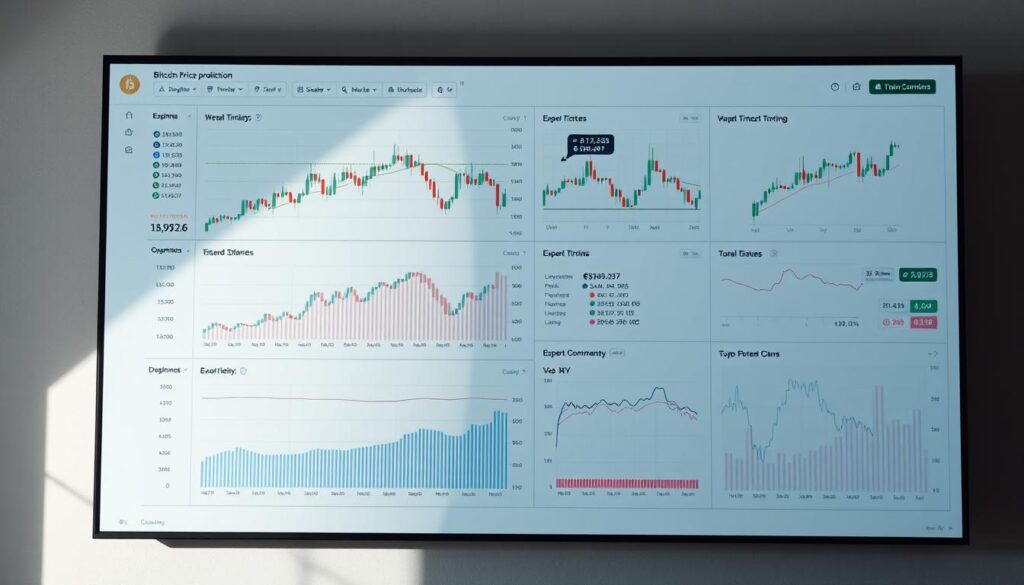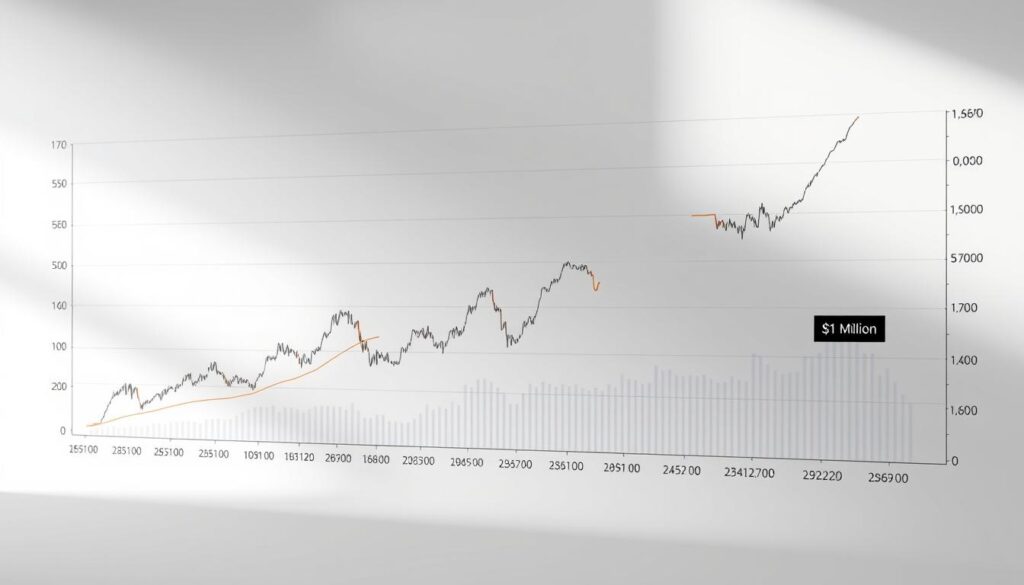Now Reading: Bitcoin Regulatory Analysis: Impact of SEC Approval on Market
- 01
Bitcoin Regulatory Analysis: Impact of SEC Approval on Market
Bitcoin Regulatory Analysis: Impact of SEC Approval on Market

The digital asset landscape has transformed dramatically as government agencies establish clearer frameworks. The Securities and Exchange Commission now plays a central role in defining how crypto markets operate under federal oversight.
Market participants witnessed significant developments in 2025. The SEC introduced comprehensive policies affecting digital asset trading, custody, and investment products. These changes reshaped the entire crypto ecosystem.
This examination explores how recent government decisions influenced the digital currency market. The changes affect everything from exchange-traded products to institutional adoption strategies. Understanding the intersection between securities rules and digital innovation has become essential.
Investors, companies, and financial institutions must navigate this evolving environment. The clarity emerging from recent actions represents a pivotal moment for United States competitiveness in global crypto markets.
Stakeholders across the financial ecosystem need to comprehend how these shifts affect market structure and compliance obligations. This comprehensive review synthesizes recent developments to provide actionable insights for anyone engaged with digital asset securities.
Introduction to the Bitcoin Regulatory Landscape
A notable change in the government’s stance on digital assets began with a call for public collaboration. Commissioner Hester Peirce’s statement, “There Must Be Some Way Out of Here,” marked this shift. It asked the crypto community for input on over 50 questions.
Setting the Context for Regulatory Changes
This move signaled a departure from previous strategies. The goal was to understand how to better oversee digital assets through direct dialogue. This collaborative model aims to build workable rules instead of imposing strict top-down restrictions.
Overview of Market Impact and Investor Concerns
For a long time, uncertainty created major hurdles for the industry. Companies were often hesitant to launch new products without clear guidelines. This environment made business planning difficult and increased legal risks.
Key concerns for investors and companies included:
- Market integrity and the potential for manipulation.
- The security of asset custody solutions.
- Adequate disclosure and fraud prevention for investor protection.
Stakeholders now see that thoughtful oversight can boost market legitimacy. It can attract more institutional capital and support sustainable growth for the entire crypto sector.
SEC Leadership and Recent Regulatory Shifts
A series of strategic appointments in late 2025 reshaped the leadership core of the nation’s top financial watchdog. These changes brought seasoned professionals with deep legal and market expertise to critical roles.
The moves signaled a commitment to addressing complex modern financial challenges with a balanced and knowledgeable approach.

Key Appointments and Organizational Changes
The Securities and Exchange Commission announced several high-profile appointments. Judge Margaret Ryan became Director of the Division of Enforcement in September 2025.
Her background includes service as a senior judge on the United States Court of Appeals for the Armed Forces. This suggests a disciplined and fair method for enforcement activities.
James Moloney was named Director of the Division of Corporation Finance. He brought experience from both a previous role at the exchange commission and private practice.
Jon Kroeper joined as deputy director of the Division of Trading and Markets. His nearly two decades at FINRA provided crucial market structure knowledge.
| Appointee | Role | Effective Date | Key Background |
|---|---|---|---|
| Judge Margaret Ryan | Director, Division of Enforcement | September 2, 2025 | Senior Judge, U.S. Court of Appeals for the Armed Forces |
| James Moloney | Director, Division of Corporation Finance | September 10, 2025 | Former SEC counsel; Gibson Dunn & Crutcher partner |
| Jon Kroeper | Deputy Director, Division of Trading and Markets | September 29, 2025 | Former SEC attorney-advisor; FINRA executive vice president |
Insights from Recent Public Statements and Legal Updates
Public statements from leadership highlighted a new direction. The announcement of “Project Crypto” indicated a move toward proactive engagement.
This shift aims to foster innovation while ensuring market integrity. A collaborative task force also issued a statement seeking industry input.
This unprecedented outreach aims to build practical compliance frameworks. The goal is clarity for all participants in the digital asset exchange.
These leadership changes correspond with substantive policy developments. They reflect a nuanced understanding of the crypto sector’s unique needs.
Bitcoin regulatory analysis SEC approval: In-Depth Insight
Market participants gained unprecedented clarity on compliance requirements for digital products. The commission’s initiative provided clear guidelines for determining when digital offerings fall under securities regulations.

Understanding the SEC’s Approval Process
Chairman Paul Atkins launched “Project Crypto” on July 31, 2025. This commission-wide effort created specific rules and exemptions for digital assets.
The framework distinguishes between different types of crypto assets. It identifies those that are securities versus those offered through investment contracts.
Implications for the Bitcoin Market and Crypto Products
This clarity reduces uncertainty for companies developing new products. Institutional participants now engage more confidently with clear compliance pathways.
The approach balances traditional securities regulation with recognition of unique digital asset characteristics. It allows different asset types to trade on regulated platforms.
| Asset Classification | Regulatory Status | Registration Requirements | Examples |
|---|---|---|---|
| Intrinsic Securities | Subject to Securities Act | Full registration required | Tokenized stocks, investment funds |
| Investment Contracts | Securities regulation applies | Disclosure obligations | Certain staking arrangements |
| Non-Securities Crypto Assets | Outside securities rules | No SEC registration needed | Utility tokens, payment coins |
| Liquid Staking (Specified Conditions) | Not securities offerings | Exempt from registration | Validated staking protocols |
The Division of Corporation Finance clarified that liquid staking arrangements generally don’t involve securities offerings under specific conditions. This guidance helps market participants understand their obligations.
Impact on Crypto ETPs and Market Product Approvals
The operational framework for crypto investment vehicles transformed substantially when new creation and redemption mechanisms received authorization. These changes marked a pivotal shift in how exchange-traded products function within digital currency markets.

SEC Moves on In-Kind Creations and Redemptions
Previously, crypto exchange-traded products operated under cash-based systems. This created inefficiencies and higher costs for market participants. The July 2025 decision introduced in-kind transactions for authorized participants.
This alignment with traditional commodity ETP structures reduced operational expenses significantly. Investors now benefit from tighter bid-ask spreads and improved trading efficiency. The change allows direct arbitrage using underlying digital assets.
Adoption of Generic Listing Standards for Digital Assets
September 2025 brought another major development with standardized listing requirements. National securities exchanges received authorization to apply generic standards for commodity-based trust shares.
This eliminated the need for individual product registration submissions. The streamlined process accelerated new product launches dramatically. Market participants gained clarity on consistent listing requirements across exchanges.
Custody arrangements evolved to support these new operational models. Secure transfer processes for digital assets became essential infrastructure components. The changes represent a maturation of crypto market structures.
Enforcement Trends and Regulatory Updates Influencing the Market
Judicial oversight emerged as a powerful force in 2025, with appellate courts checking regulatory authority on multiple fronts. Federal courts established important precedents that shaped how agencies implement new rules affecting market participants.
Recent Court Rulings and Legal Challenges
The Eleventh Circuit vacated a funding plan for the Consolidated Audit Trail on July 25, 2025. The court found the agency failed to consider cost implications for broker-dealers under the exchange act.
Similarly, the Fifth Circuit remanded short-selling transparency rules on August 25, 2025. The court required analysis of combined economic impacts when adopting related requirements.
Policy Statements and Enforcement Actions That Shape the Industry
A September 17, 2025 policy statement clarified that arbitration provisions won’t affect registration decisions. This removed uncertainty about federal securities law claims handling.
Enforcement trends shifted toward clear violations rather than expanding securities laws boundaries. The approach prioritizes practical compliance over aggressive litigation.
| Date | Court/Agency | Action | Market Impact |
|---|---|---|---|
| July 25, 2025 | Eleventh Circuit | Vacated audit trail funding plan | Enhanced cost-benefit analysis for new rules |
| August 25, 2025 | Fifth Circuit | Remanded short-selling rules | Required combined economic impact assessment |
| September 17, 2025 | Securities Agency | Policy statement on arbitration | Clarified registration process requirements |
Crypto Asset Classification and Regulatory Challenges
Determining which crypto assets qualify as securities has emerged as a critical regulatory frontier. This classification dictates which laws apply and which agencies oversee different digital tokens.
Commissioner Hester Peirce proposed a clear taxonomy that distinguishes four categories of crypto assets. Her framework helps market participants understand compliance requirements.

Defining Tokenized Securities Versus Traditional Digital Assets
Peirce’s classification system separates assets with intrinsic security characteristics from those offered through investment contracts. It also identifies tokenized securities and non-security digital assets.
The largest category contains crypto assets that are not securities according to Peirce’s view. This contrasts with previous leadership positions that considered most digital tokens as securities.
Investment advisers must understand these distinctions when managing client portfolios. They face unique custody challenges with digital tokens that differ from traditional assets.
| Asset Category | Regulatory Status | Key Characteristics |
|---|---|---|
| Intrinsic Securities | Full securities regulation | Have traditional security features |
| Investment Contracts | Securities regulation applies | Profits from others’ efforts |
| Tokenized Securities | Existing securities rules | Traditional instruments on blockchain |
| Non-Security Assets | Outside securities framework | Commodities, utilities, currencies |
Funds and investment companies need proper classification for compliance. Understanding these categories is essential for effective cryptocurrency market fundamental analysis framework.
The Howey test remains the standard for identifying investment contracts. Each asset’s classification depends on its specific use case and offering circumstances.
Industry Response and Future Regulatory Directions
The digital asset industry has demonstrated remarkable adaptability in responding to evolving government oversight. Companies across the sector have significantly increased their compliance investments to meet new requirements.
Following the September 2025 joint statement from financial watchdogs, market participants gained clarity on trading permissions. This allowed companies to adapt their business models with greater confidence.
Market Adaptation to Changing Compliance Requirements
Investment management firms have restructured their digital asset offerings in response to clearer guidelines. Some launched registered investment companies while others focused on advisory services.
The extension of Form PF requirements to October 2026 acknowledged the complexity of reporting digital assets. This gave advisers additional time to develop appropriate systems.
Predictions for Future SEC and Legislative Actions
Future regulation will likely address stablecoins and decentralized finance protocols. Congressional legislation may define boundaries for existing securities laws.
Industry participants continue engaging with regulatory requests for input. This proactive approach helps shape practical compliance frameworks that support innovation while protecting investors.
The balance between innovation speed and compliance diligence remains a key challenge for management teams. Clear requirements reduce legal risks but impose operational demands.
Conclusion
Market participants can now navigate digital finance with unprecedented clarity following comprehensive policy developments. The shift from uncertainty to structured frameworks marks a significant advancement for the entire crypto ecosystem.
This new environment strengthens investor protection through better disclosure requirements and custody standards. Investment opportunities have expanded as institutions gain confidence in compliant product structures.
The classification of digital assets provides essential guidance for securities compliance. Market infrastructure improvements support sustainable growth while maintaining necessary security measures.
Future regulation will likely build on these foundations, balancing innovation with robust investor protection. The market now has the clarity needed for long-term development and mainstream adoption.















